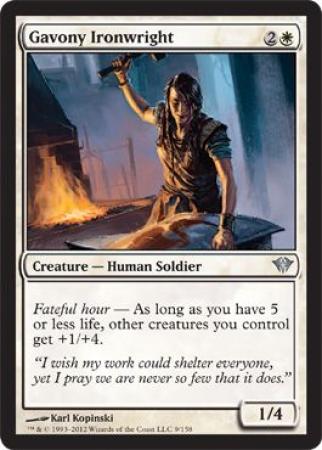The
SMITH
Test
the metal of this NPC
by
Ed Greenwood

The
SMITH
Test
the metal of this NPC
by
Ed Greenwood

| How smiths learn their trade | - | - | - | Smith skills by level |
| Dragon | Classes | - | Best of Dragon, Vol. IV | Dragon 70 |
This suggested non-player character type is designed to
represent the powers and limitations of any metalworker
encountered in an AD&D™ setting,
and in particular to quantify
the skills of those rare individuals who can create works of
exquisite beauty and lasting durability, or even work successfully
with magic.
A smith must be human, and will usually be a member of one <half-orc
smith, A1-4.71>
of the official character classes (fighter, thief, etc.) in addition
to having status as a smith. (A dwarven or gnomish smith, or
any other sort of non-human character, can be roughly equated
to the levels and skills of the smith as given here, but these
characters possess other abilities unattainable by a human
smith.) A smith may not advance in his or her “primary” class
while practicing smithywork, however: The profession is too
time-consuming to allow an individual to “keep his hand in”
another specialized activity at the same time.
The sole exception to this occurs if the character is involved
in armed combat. A smith who actively practices with and uses
his weapons engages in battle (when it occurs) as a fighter, and
gains one level of fighter ability for every four smith levels
advanced. When a smith engages in combat for the first time, he
will begin as a 1st-level fighter, regardless of his present smith
level, and will reach the 2nd level of fighting ability only after
gaining four additional levels as a smith. Note that no tutoring is
required for this fighter advancement, beyond what is necessary to
advance as a smith.
A fighter who opts to become a smith, on the other hand,
retains his present fighter level in combat, gaining an additional
level only after gaining four smith levels. A smith who has no
other class fights as a 1st-level fighter.
A smith, unlike other “normal” fighters, can use any weapon
of a type he has made proficiently. A smith who also belongs to
another class besides the fighter class (and its subclasses) may
manufacture, but not use, weapons forbidden to the “primary”
class. (For example, a smith/cleric could forge, but not use, a
sword.) A smith who is also a member of another class gains 1
hit die (of the type allowed for the other class) only when
advancing in that other class. A smith who has no other class
begins with one 10-sided die and gains 2 hit points per smith
level advanced thereafter.
Smiths are always busy, rarely unemployed, and usually
wealthy. Their expenses (i.e., the purchasing of metal, the construction
and upkeep of a workshop and forge) are high. A
smith must have a minimum strength of 12 and a minimum
dexterity of 13. High intelligence is also useful, and the best
smiths have high scores in all three abilities. Smiths may be of
any alignment. Most independent smiths (those having no
other class) tend toward a neutral alignment and will make
goods, including weapons, for customers of all alignments,
causes and interests.
SMITHS TABLE 1
How smiths learn their trade
The training and advancement of smiths is only standardized
in areas where strong, stable guilds exist. Elsewhere, smiths
learn by working for those who can teach them new areas or
techniques of their craft. Knowledge can be learned in any
order; that is, a dwarf could give a 1st-level smith (or an ordinary
0-level peasant, for that matter) the secrets of properly
working mithril, but to apply this knowledge, the smith would
have to wait until his craftsmanship had sufficiently advanced.
This craftsmanship — the learning, practice, and honing of
skills — must be acquired in a certain order, building on what
has previously been mastered. If a smith cannot find a tutor for
any particular field of the craft, he or she cannot advance. Most
smiths never advance beyond the 5th level of experience. Experience
points are awarded to a smith by the DM on the basis of
such training, according to the variety and difficulty of work
undertaken by the smith (and success thereof, if any), and on
the basis of time spent at the craft.
For example, a busy smith
might gain 2 experience points per working day, plus awards
for exceptional workmanship, artful or elegant designs and
solutions, and for other circumstances at the DM’s option.
Smiths are usually too busy to tutor others unless such
apprentices can be of help in the workshop, and they can
contribute money or materials (raw metal or weaponry) to the
smith’s business.
SMITHS TABLE 2
(percentage chance for outstanding performance)
Exceptional workmanship (per item made):1
Experience
Level of Smith
| 1 | 2 | 3 | 4 | 5 | 6 | 7 | 8 | 9 | 10 | 11 | 12 | |
| 5 | 10 | 15 | 20 | 25 | 30 | 35 | 40 | 45 | 50 | 55 | 602 |
Artful or elegant design, or solution to design problem (per project
undertaken):3
Experience
Level of Smith
| 1 | 2 | 3 | 4 | 5 | 6 | 7 | 8 | 9 | 10 | 11 | 12 | |
| 2 | 4 | 6 | 8 | 10 | 12 | 14 | 16 | 18 | 20 | 22 | 244 |
¹ — Add a modifier of +3% per point of smith’s dexterity
over 16. If the roll is successful, the item made will clearly
be of exceptional quality to even a cursory examination,
and can be sold for more than the usual value. Such an
item is also suitable for use in an Enchant An Item spell (to
become an enchanted weapon), since it is “crafted of the
highest quality material and with the finest workmanship.” If the item
is a weapon, a second roll should be
made on the table, and if this roll is successful, the weapon is of
such extraordinary quality as to make it +1 on
damage. (It can be enspelled with further powers by a
spellcaster, but a smith — and only a smith — by his arts
can give such a weapon only a +1 damage bonus, plus the
extraordinary balance, sharpness, strength and durability this includes.)
² — Increases to a maximum chance of 65%, attained at
13th level.
3 — Add a modifier of +4% per point of smith’s intelligence over 16.
Success on this roll can indicate that the
smith will receive an experience-point bonus for the project in question
(as mentioned in the text above), and/or
that the item produced will be higher-priced than a “nonelegant” item
of the same type, and may have other ramifications as well, at the DM’s
option.
4 — Increases 2% per level to a maximum chance of
36%, attained at 18th level.
Smiths’ skills by level
Prentice: First-level smiths are usually trained by higher-level
smiths; a Prentice usually receives no wages, and works in a
smithy for room and board, learning his trade from others there.
(Some famous smiths in large cities can even charge a Prentice
— or his family — a fee for such an arrangement.) A Prentice is
so named because his skills are so rudimentary that he could
not go into business on his own. Usually a Prentice masters one
specific task (since that is how he can be most useful at a large
smithy), and acquires the basics of his trade: how to identify
metals, and how they differ; how a fire is properly made, lit, and
kept at a certain temperature (and what different fires are
needed for different tasks); and how to identify the work of
various smiths by their marks and workmanship. A Prentice of
even a month’s experience can correctly identify the various
pieces that make up armor, even when such a piece is alone, out
of context, or fragmented or distorted by use.
Journeyman: At second level, a would-be smith is trained in
all basic types of smithywork, rather than the single task concentrated
on before. (A Journeyman can thus be useful at any
smithy and, as the level title implies, many of them travel about
and hire on where needed.) Specific skills gained are the rudiments
of cold-working (“hammerwork”); how to correctly hold
work while another strikes it, so that it will not slip or jump; the
art of quenching; how to mix and refine oil (by filtration and
separation) for the best tempering, and similar tasks. A Journeyman
can properly — or improperly, if he so chooses — shoe
a horse. (A favorite trick played on travelers by unscrupulous
smiths in medieval times was to shoe a horse so that one of the
nails pricked the sensitive frog in the center of one of the
horse’s hooves. About five miles from the smithy, the beast
would pull up lame — and an accomplice of the smith would be
waiting to buy the horse for a fraction of its true value. After the
nail was removed, the horse would recover, but few travelers
knew this, or had the time to wait for the beast’s recovery. A
Journeyman or any higher-level smith can shoe a horse in this
manner, so that the shoe will appear properly fitted to anyone
but another smith of equal or higher level.)
Hammerman: In a large workshop, the Hammerman’s job is
to shape large plates of armor over molds by the use of various
hammers. Precise control of the heavy hammers is required to
deftly bend metal to the desired contours. A Journeyman of
sufficient experience can advance to the level of Hammerman
by learning this skill, plus gaining both knowledge of, and
practice in, the ways of cutting or splitting metal plates. It is at
the third level of training that a smith is entrusted with “white”
metals, copper and tin. They are both more delicate (harder to
work without failure) and more expensive than the “black”
metals — chiefly iron, although lead and others are included
— so special training is required. (This is how the term “blacksmith”
originated. “Whitesmith” is a title that fell into disuse
long ago, in favor of the more specific “coppersmith,” “tinsmith,”
and the like.)
Millman: In a large smithy, the Millman has the task of polishing,
oiling, and otherwise preparing metal to give it a finish. A
Hammerman who gains the requisite experience points to
advance to fourth level must also learn about the difficult techniques
of finishing metal to advance further. (Some smiths
consider finishing “an art all its own.“) Many smiths never attain
this level, because the training is typically long and expensive
— if a tutor can even be found.
Locksmith: The term “locksmith” today refers to the detailed
manufacture and repair of devices largely unknown in medieval
times. The medieval locksmith was concerned with fastenings,
catches, and hinges as well as keylocks. As defined for use in
the AD&D game, a Locksmith’s skills are required for the
making of armor or any metallic device which must bend, flex, or
move readily. A Locksmith can make lockpicks, chests, chastity
belts, and sword-harnesses (scabbards, cross-belts, buckles
and ornaments for both, and the like), as well as locks. The
locks may have needles or scything blades to protect them, and
may have hidden catches or require more than one key to be
used in a certain order — but all such locks will be only keyactivated
devices, not “combination” locks or otherwise guarded in nature, and cannot
(unless made under the first-hand,
continuous direction of a magic-user of sufficient level) involve
magic. Only smiths of 13th or higher level have been known to
produce unique locks involving magic and combinations.
Smith (“Truesmith”): Upon reaching this level, a smith can
perform all of the skills already learned without supervision or
assistance, and yet produce top-quality work. He or she can
also supervise, oversee, and handle the minutiae of a large,
specialized smithy crew, and is familiar enough with metals and
working them to improvise an alternative to some missing tool
or method. A Truesmith can buy supplies without fear of being
deceived as to the type or quality of metal, can step in at a
moment’s notice to successfully complete a partly finished task
in any of the specialties already learned, and (with supervision)
can accomplish the skills learned fully at later levels.
Smith (“Shieldsmith’): A Hammerman can create a shield
that appears to be of professional quality, but there is an art to
making the best possible shield for any bearer. A Shieldsmith
learns how to match a shield to an individual by weight, dimensions,
and balance, and through training and practice learns
the specific properties of different metals and common alloys
(such as bronze) so as to derive maximum strength and durability from
them. A shield must stop a blow, and spring with it so
that the wearer’s arm beneath the shield need not absorb the
entire force of the blow. It must not crumple or shatter, even in
conditions of extreme temperatures, unless faced by strength
vastly greater than that of another human. (For instance, a
dragon might crush a well-made shield, but a footman wielding
a mace should not be able to.) A Shieldsmith can create such an
item. Shields made by smiths of lower levels may not stand up
to such severe tests.
Smith (“Finesmith’):Knowledge of the properties and the
working of gold and other rare and precious metals is learned
by one becoming a Finesmith. Jewelry requiring intricate settings,
much curved and welded wire, and the sculpting of leaves
or patterns, usually in miniature, is almost always made by a
smith of this level or higher, or at least under the supervision of
such a smith. Work not done under these conditions will be of
lesser quality. A Finesmith learns how to securely bond a plating or
coating of one metal over another, which metals will
interact through electrolysis, and how all finework can be
designed and treated for maximum strength and weather resistance. Gauntlets
of the finest quality are made by smiths of
this level and higher.
Smith (“Swordsmith”): A Finesmith who has gained sufficient experience
with metals and alloys can be trained in the
techniques of smelting, of devising one’s own alloys (or at least
varying the proportions and methods of manufacture to
heighten the properties desired), and of forging sword blades
of the finest quality (considering balance, temper, edge, and
strength). These are the skills of the Swordsmith, who may
re-forge a blade a hundred times until it is just right for its
intended user. A lowly Prentice can sharpen a blade, a Journeyman can
produce a crude sword, and a Truesmith can turn
out a serviceable weapon — but a Swordsmith can produce
blades of outstanding, lasting quality.
Master Smith: A Swordsmith of sufficient experience learns
the most intimate familiarity with all weapons, and is then ready
to learn the techniques of repairing even the finest weapons to
“good as new” condition, and of replacing and matching ornamentation
exactly. A Master Smith also learns and practices the
art of creating and repairing magical weapons in such a way as
to infuse a dweomer or retain an existing dweomer. (Note that
very few smiths, if any, can Enchant an Item. Smiths merely
work with a magic-user patron to create a weapon that will be
magical, or repair magical weapons in such a way that their
magic is not lost.)
Armorer: A crude suit of armor (that is, coat-of-plate or any
armor that includes some moving or shaped plates, rather than
a simple mail-shirt) can be fashioned by any smith of the 6th
level or higher. The plates will not stand up to heavy blows
unless their maker has the skills of a Shieldsmith or a smith of
higher level, and the armor will not fit the wearer as armor
should (providing optimum mobility, visibility, and protection)
unless the smith is of Armorer level. (However, adequate horse
barding can be made by a Shieldsmith. Extra body-plates for
use in tilting can also be made by a Shieldsmith, as long as they
do not require joints or flexible armored areas.) An Armorer can
design and fashion all pieces of a suit of armor so that the suit
will fit a particular physique perfectly (including bodies that are
deformed or have tails, horns, and the like not normally found in
a human form), and can oversee the rapid production of helms,
shields, and breastplates by smiths of lower level.
Master Armorer: A smith of 12th level can identify raw ores,
smelt and process these singlehandedly (or oversee the process, with
maximum efficiency and quality of output) from the
ore to finished product, can judge the suitability of any ore for a
particular use, and can oversee the making of suits of armor by
other smiths (even if they are of low level and could not,
unaided, construct such items). The Master need never touch
such suits, but if he oversees their production closely, their
workmanship will be of Armorer-level quality. A Master Armorer
can himself construct armor with unusual features; e.g., with
decorative fluting to lighten overall weight, studded with
spikes, or armor designed to protect — and yet not hamper the
movements of — a prehensile tail.
As a rough rule of thumb, a Truesmith can work (that is,
complete a project from the initial order or idea to the finished
product) twice as fast as a Prentice, a Master Smith twice as fast
as a Smith, and a Master Armorer twice as fast again. In practice,
of course, factors such as strength,
dexterity (and the
advances of age), availability of materials, and freedom from
distractions all affect the time needed to complete a project.
Master Armorers (all smiths of higher than 11th level) have
mastered their craft so completely that any experimentation
and innovation they attempt has a reasonable chance of success; a Dungeon
Master should keep careful track of advances
(or losses, should high-level smiths die without training others
in their knowledge and skills) in technology resulting from the
work of a Master Armorer.
1. SUBCLASS = n/a
2. SOCIAL CLASS MINIMUM =
3. ABILITY SCORE MINIMUMS
STRENGTH =
INTELLIGENCE =
WISDOM =
DEXTERITY =
CONSTITUTION =
CHARISMA =
COMELINESS =
4. POSSIBLE RACES & MAX. LEVEL ATTAINABLE =
5. MULTI-CLASS POSSIBILITIES =
6. HIT DIE TYPE =
7. MAXIMUM NUMBER OF HIT DICE =
8. SPELL ABILITY =
9. ARMOR PERMITTED =
10. SHIELD PERMITTED =
11. WEAPONS PERMITTED =
12. OIL PERMITTED =
13. POISON PERMITTED =
14. ALIGNMENT =
15. STARTING MONEY =
16. WEAPON PROFICIENCIES =
17. NON-PROFICIENCY PENALTY =
18. NON-WEAPON PROFICIENCIES =
19. STARTING AGE =
20. COMBAT =
21. SAVING THROWS =
22. MAGIC ITEMS =
| XP | Level | Dice for HP | Title | ||||||
THE SMITH: Test the metal of this NPC
By Ed Greenwood
Str: 12+
Dex: 13+
When a smith engages in combat for the first time, he will begin as a 1st-level fighter, regardless of his present smith level, and will reach the 2nd level of fighting ability only after gaining four additional levels as a smith.
A smith who has no other class fights as a 1st-level fighter.
A smith who is also a member of another class gains 1 hit die (of the type allowed for the other class) only when advancing in that other class.
A smith who has no other class begins with one 10-sided die and gains 2 hit points per smith level advanced thereafter.
How Smiths Learn Their Trade
Knowledge can be learned in any order; that is, a dwarf could give
a 1st-level smith (or an ordinary 0-level peasant, for that matter) the
secrets of properly working mithril, but to apply this knowledge, the smith
would have to wait until his crafsmanship had sufficiently advanced.
Most smiths never advance beyond the 5th level of experience.
For example, a busy sith might gain 2 XP per working day, plus awards for exceptional workmanship, artful or elegant designs and solutions, and for other cicumstances at the DM's option.
SMITHS TABLE 2
(percentage chance for outstanding performance)
Exceptional workmanship (per item made):1
Experience
Level of Smith
| 1 | 2 | 3 | 4 | 5 | 6 | 7 | 8 | 9 | 10 | 11 | 12 | |
| 5 | 10 | 15 | 20 | 25 | 30 | 35 | 40 | 45 | 50 | 55 | 602 |
Artful or elegant design, or solution to design problem (per project
undertaken):3
Experience
Level of Smith
| 1 | 2 | 3 | 4 | 5 | 6 | 7 | 8 | 9 | 10 | 11 | 12 | |
| 2 | 4 | 6 | 8 | 10 | 12 | 14 | 16 | 18 | 20 | 22 | 244 |
1 - Add a modifier of +3% per point of smith's dexterity over 16.
Such an item is also suitable for use in an enchant an item spell (to become an enchanted weapon), since it is "crafted of the highest quality material and with the finest workmanship."
If the item is a wewapon, a second roll should be made on the table, and if this roll is successful, the weapon is of such extraordinary quality as to make it +1 on damage. (It can be enspelled with further poiwers by a spellcaster, but a smith - and only a smith - by his arts can give such a weapon only a +1 damage bonus, plus extraordinary balance, sharpness, strength and durability this includes.)
2 - Increases to a maximum chance of 65%, attained at 13th level.
3 - Add a modifier of +4% per point of smith's intelligence over 16.
4 - Increases 2% per level to a maximum chance of 36%, attained at 18th level.
Smiths' skills by level
Locksmith: Only smiths of 13th level or highter have been known
to produce unique locks involving magic and combinations.
Mastersmith: (Note that very few smiths, if any, can enchant an item.
Master Armorer: A smith of 12th level can identify raw ores, smelt and process these singlehandedly (or oversee the process, with maximum efficiency and quality of output) from the ore to finished product, can judge the suitability of any ore for a particular use, and can oversee the making of suits of armor by other smiths (even if they are of low level and oculd not, unaided, construct such items).
Master Armorers (all smiths of higher than 11th level) have mastered their craft so completely that any experimentation and innovation they attempt has a reasonable chance of success; a Dungeon Master should keep careful track of advances (or losses, should high-level smiths die without training others in their knowledge and skills) in technology resulting from the work of a Master Armorer.
Notes (My ideas)
* Only dwarves know the secrets of working mithril. This can be taught
to others.
* 2 XP per working day.
* Award XP if either roll on Table 2 is made (award twice if 2 successful
rolls on Table 2)
* Artful design = x2 gp value
<following might not be perfect, yet>
SOCIAL CLASS MINIMUM= ?
ABILITY SCORE MINIMUMS
STRENGTH= 12 (8d6)
INTELLIGENCE= (7d6)
WISDOM= ?
DEXTERITY= 13 (9d6)
CONSTITUTION= ?
CHARISMA= ?
COMELINESS= ?
PERCEPTION= ?
POSSIBLE RACES= h (g*, d*)
MAXIMUM LEVEL ATTAINABLE= u
HIT DIE TYPE= d10 if single-class smith
MAXIMUM NUMBER OF HIT DICE= 1 if single-class smith
SPELL ABILITY= ?
ARMOR PERMITTED= ?
SHIELD PERMITTED= ?
WEAPONS PERMITTED= Any if single-class smith, Otherwise as other class
OIL PERMITTED= ?
POISON PERMITTED= ?
ALIGNMENT= Any (single-class smiths tend towards N)
STARTING MONEY= ? ("usually wealthy")
WEAPON PROFICIENCIES= any he has forged
NON-PROFICIENCY PENALTY= ?
NON-WEAPON PROFICIENCIES= ?
STARTING AGE= ?
COMBAT= As F1 in first combat. 4 levels from this combat, as F2. 4
levels later, as F3, etc. (If not single-classed, then always use the best
value).
SAVING THROWS= ?
Fighter-Smith Combined XP
| 1 | 0 - 3500 |
| 2 | - 5000 |
| 3 | - 14,000 |
| 4 | - 27,000 |
| 5 | - 50,000 |
| 6 | - 91,000 |
| 7 | - 158,000 |
| 8 | - 295,000 |
| 9 | - 569,000 |
| 10 | - 843,000 |
| 11 | - 1,141,000 |
| 12 | - 1,439,000 |
zb
11.
10.
Hoppsman the Weapon Master
9.
8.

7.
6.
5.
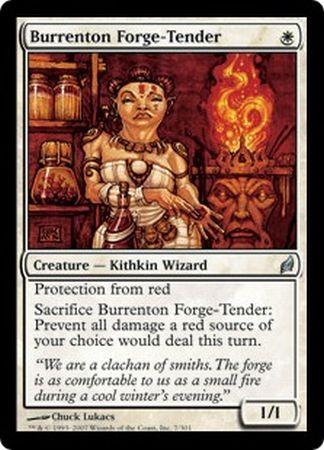
4.
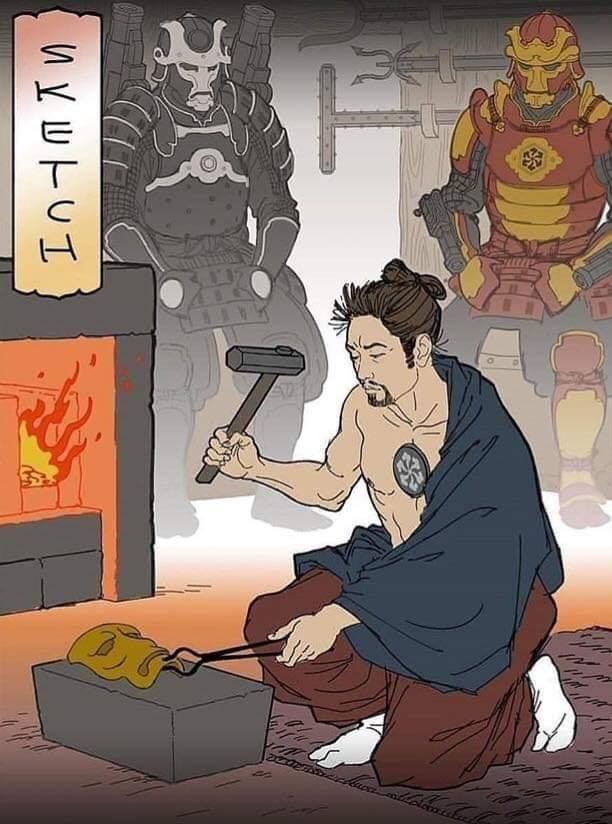
3.
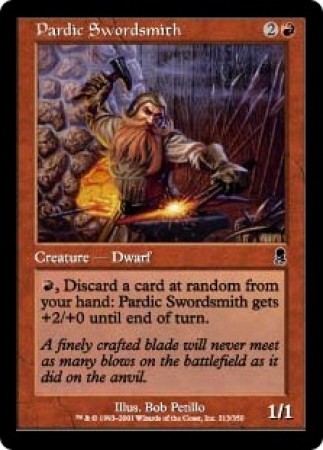
2.
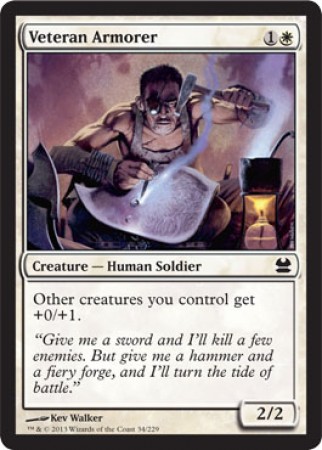
1.
